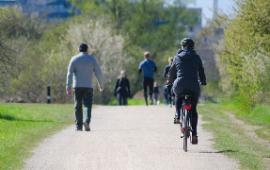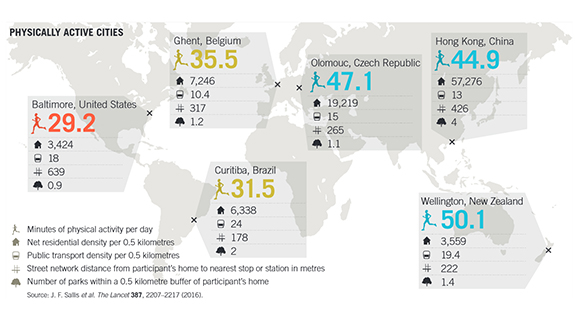Why we’re designed to move

In Summary
- This article featured in Swinburne’s 2017 ‘Research Impact’ magazine, produced in association with Nature Publishing Group.
Spending long periods of time sitting can be a significant mortality risk.
Designing urban environments that promote activity and discourage sitting has spurred the development of new cross-disciplinary research at Swinburne.
An estimated five million deaths around the world each year are attributable to sedentary lifestyles and in Australia the federal government’s physical activity and sedentary behaviour guidelines now recommend limits on ‘sitting’ time.
The link between increased sitting time and greater risk of heart disease, diabetes and other illnesses was made in part thanks to work by new Swinburne appointment Professor Neville Owen.
Professor Owen’s work has shown that the amount of time a person spends sitting can significantly influence their mortality risk. Importantly, evidence increasingly suggests the risk is reduced, but not eliminated, by compensating with extra physical activity.
“Spending long periods of time sitting can be a significant mortality risk,” he says.
“It is now an urgent priority to better understand how improvements in the built environments of cities, along with initiatives in transport policy and workplace design can help people to be more active.”
A globally renowned health sciences professor, Professor Owen was appointed Distinguished Professor at Swinburne in June 2016. He has worked with the university’s Smart Cities Institute to ensure the clinical research identifying the determinants of metabolic disease instruct the formation of policies to shape urban environments for better health.
Research funded by the National Health and Medical Research Council at the Baker Heart and Diabetes Institute in Melbourne, where Professor Owen heads the Behavioural Epidemiology Laboratory, has established that breaking up periods of sitting can significantly reduce blood coagulation, lower blood pressure and lead to healthier blood sugar levels.
“Something as simple as very brief interruptions to sitting has major improvements in glucose, insulin, and blood pressure,” says Professor Owen.
Separately, in a comparison of lifestyles in cities around the world published in The Lancet, Professor Owen was one of an international team of researchers that showed higher density urban areas with good public transport and more green space, meant more active inhabitants.

Within Swinburne’s new Smart Cities Institute, a multidisciplinary group including social scientists, traffic engineers, urban designers and epidemiologists, such as Professor Owen, work has begun on translating these findings into practical solutions for improving health.
“There is huge potential at Swinburne to build those coalitions,” Professor Owen says.
The goal is urban design policy that will reduce the risk of diabetes, cardiovascular disease and even breast and colon cancer by helping people to sit less and be more physically active within the normal pattern of their lives.

